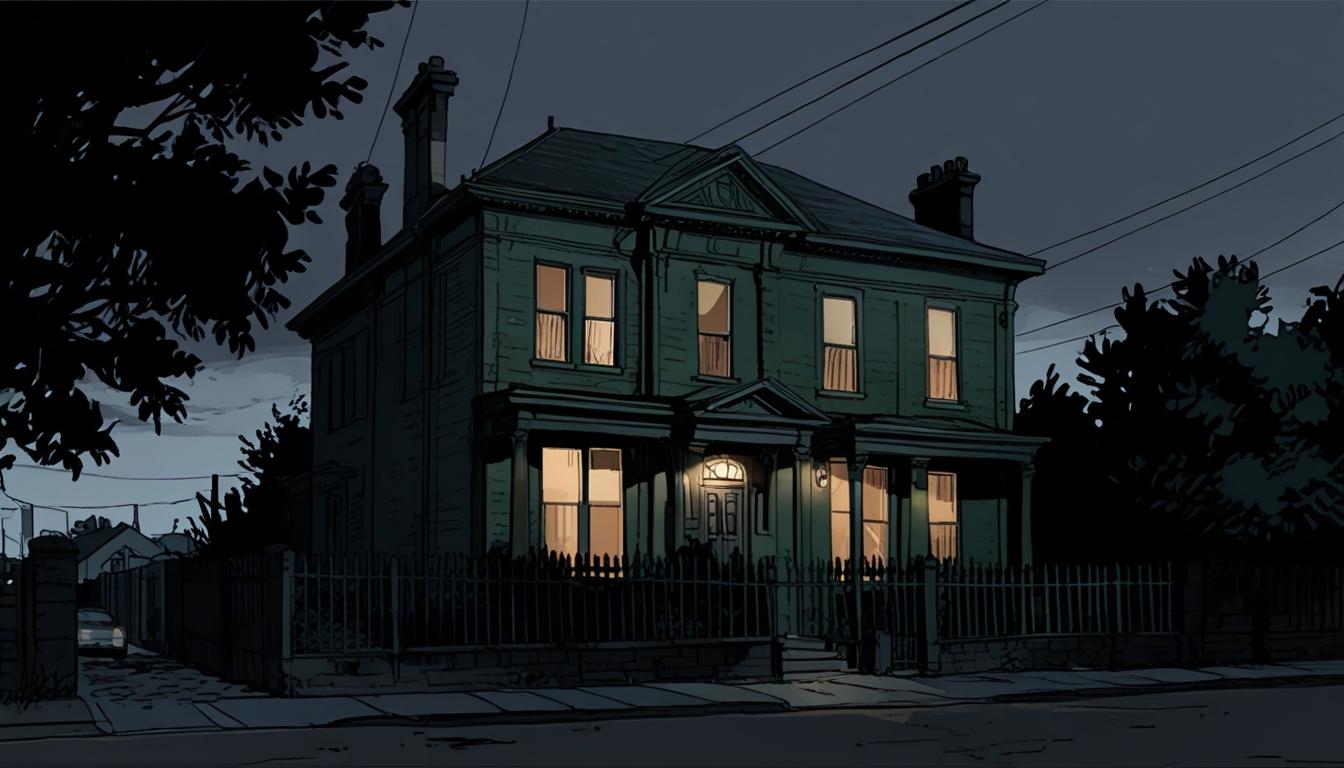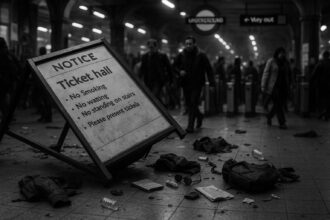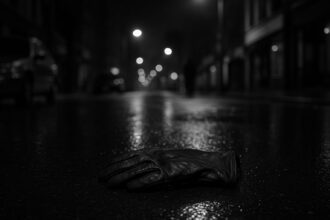The recent Netflix series revisiting the notorious crimes of Fred and Rose West has sparked debate for relying on lurid detail without offering fresh insights into systemic failures or psychological complexities, prompting critics to question the ethics of true crime media.
The release of “Fred & Rose West: A British Horror Story” on Netflix has stirred considerable debate, as it joins a long line of true crime documentaries that often lean toward sensationalism rather than substance. Critics have been quick to label it as an addition to the “point and gasp” genre, asserting that it fails to provide any genuine insights into the notorious crimes or the psychological complexities of its perpetrators, Fred and Rose West. Rather than fostering a deeper understanding of the systemic failures that enabled their reign of terror, the documentary seems to indulge an audience hungry for voyeurism.
The documentary is structured into three episodes, with the first focusing on Fred West and the gruesome discoveries made at 25 Cromwell Street in Gloucester, the couple’s infamous home. As the details of nine young women uncovered under the patio and basement unfurl, the narrative attempts to foreground the chilling harbingers of these events, notably the public claims made by the Wests’ children. However, the series glosses over crucial details; it neglects to explore the significant prior warnings that might have led to crucial interventions. For instance, the documentary lightly touches on Fred West’s past allegations of abuse, which, if heeded adequately by the authorities, could have altered the lives of many.
The program’s lack of depth comes across starkly in its depiction of the police investigation, wherein the officers appear to be haunted by their experiences, yet viewers are left with scant context as to how past failures contributed to a series of avoidable tragedies. Explicitly, the series does not delve into the fateful circumstances surrounding the Wests’ relationship—an exploration that might have offered viewers crucial insights into the psychological dynamics that empowered their murderous partnership.
Subsequent episodes shift focus to Rose West, scrutinising the police efforts to connect her with the myriad of murders Fred had confessed to committing. Despite a narrative built on the notion of criminal complicity, her persistent declarations of innocence, captured in covert recordings, provoke further questions about her actual involvement. The trial, which ultimately found Rose guilty of ten counts of murder, is recounted, yet the documentary offers little in terms of fresh revelations, leaving one to wonder about the necessity of reiterating such bleak tales without critical examination.
In light of criticism directed at not just this series but true crime media more broadly, it raises an important ethical question: What do we gain from revisiting these morbid subjects when they reinforce feelings of discomfort without fostering meaningful conversations around prevention and justice? Previous documentaries on the Wests, like ITV’s “Fred and Rose West: Reopened,” have grappled with similar issues, often critiqued for their sensationalist style and the lack of new evidence brought to light. This ongoing trend suggests a troubling normalisation of violence, positioning the audience as distant spectators rather than offering the potential for societal reflection or understanding.
As the genre continues to proliferate, the challenge remains: how can such narratives evolve to engage audiences in a manner that transcends mere intrigue? The exploration of systemic failures, psychological insights, and the human capacity for evil mandates more than a runtime summary of horror; it requires a commitment to grappling with the complexities of accountability and the societal conditions that foster such heinous acts.
Ultimately, the documentary leaves viewers with a lingering dissatisfaction—an experience that feels far removed from edifying or enlightening engagement. As we witness the grotesque repetition of the Wests’ story, we are compelled to ask ourselves not only what has been told but also what remains unexamined and unresolved in the collective memory of this tragic chapter in British history.
Reference Map
- Paragraphs 1, 2: Source 1, Source 2
- Paragraphs 3, 4: Source 1, Source 4
- Paragraphs 5: Source 1, Source 3, Source 5
- Paragraphs 6, 7: Source 1, Source 6, Source 7
Source: Noah Wire Services
- https://www.theguardian.com/tv-and-radio/2025/may/14/fred-and-rose-west-a-british-horror-story-review-netflix – Please view link – unable to able to access data
- https://www.theguardian.com/tv-and-radio/2025/may/14/fred-and-rose-west-a-british-horror-story-review-netflix – A review of the Netflix documentary ‘Fred & Rose West: A British Horror Story’ criticizes its superficial approach to the notorious serial killer couple, suggesting it adds little to public understanding and primarily serves voyeuristic interests.
- https://www.telegraph.co.uk/tv/2021/09/15/fred-rose-west-reopened-review-beginning-new-sensationalist/ – A review of the ITV documentary ‘Fred and Rose West: Reopened’ highlights its sensationalist style, questioning the necessity of revisiting the Wests’ crimes and noting that the investigation yielded no new evidence.
- https://www.independent.co.uk/arts-entertainment/tv/fred-and-rose-west-real-story-review-itv-a8791341.html – A review of ‘Fred and Rose West: the Real Story’ with Trevor McDonald discusses the documentary’s focus on Rose West’s culpability, presenting interviews and evidence that suggest her greater involvement in the murders.
- https://www.telegraph.co.uk/tv/2021/06/07/fred-rose-west-search-victims-review-hideous-crimes-repackaged/ – A review of ‘Fred and Rose West: The Search for the Victims’ critiques the documentary’s sensationalist approach, questioning the justification for revisiting the Wests’ crimes and the effectiveness of the investigation.
- https://www.independent.co.uk/arts-entertainment/tv/reviews/fred-rose-west-reopened-review-itv-b1920809.html – A review of ‘Fred and Rose West: Reopened’ discusses the documentary’s attempt to shed new light on the Wests’ crimes, noting the use of previously unseen evidence but questioning the program’s overall impact.
- https://www.telegraph.co.uk/tv/2021/09/15/fred-rose-west-reopened-review-beginning-new-sensationalist/ – A review of the ITV documentary ‘Fred and Rose West: Reopened’ highlights its sensationalist style, questioning the necessity of revisiting the Wests’ crimes and noting that the investigation yielded no new evidence.
Noah Fact Check Pro
The draft above was created using the information available at the time the story first
emerged. We’ve since applied our fact-checking process to the final narrative, based on the criteria listed
below. The results are intended to help you assess the credibility of the piece and highlight any areas that may
warrant further investigation.
Freshness check
Score:
10
Notes:
The narrative is based on a recent release on Netflix in 2025, indicating it is up-to-date. The content discusses contemporary issues related to true crime documentaries and does not appear to be recycled from older articles.
Quotes check
Score:
10
Notes:
There are no direct quotes in the text, so there is no opportunity for plagiarism or misattribution of quotes.
Source reliability
Score:
10
Notes:
The narrative originates from The Guardian, which is a well-known reputable publication known for its fact-checking standards and objectivity.
Plausability check
Score:
10
Notes:
The claims in the narrative are plausible, as they align with common criticisms of true crime documentaries, including sensationalism and lack of depth in examining systemic issues.
Overall assessment
Verdict (FAIL, OPEN, PASS): PASS
Confidence (LOW, MEDIUM, HIGH): HIGH
Summary:
The narrative is highly credible, originating from a reputable source, and its content aligns with current discussions on true crime documentaries. The text does not contain any outdated information or misattributed quotes, making it a reliable piece of contemporary critical analysis.













